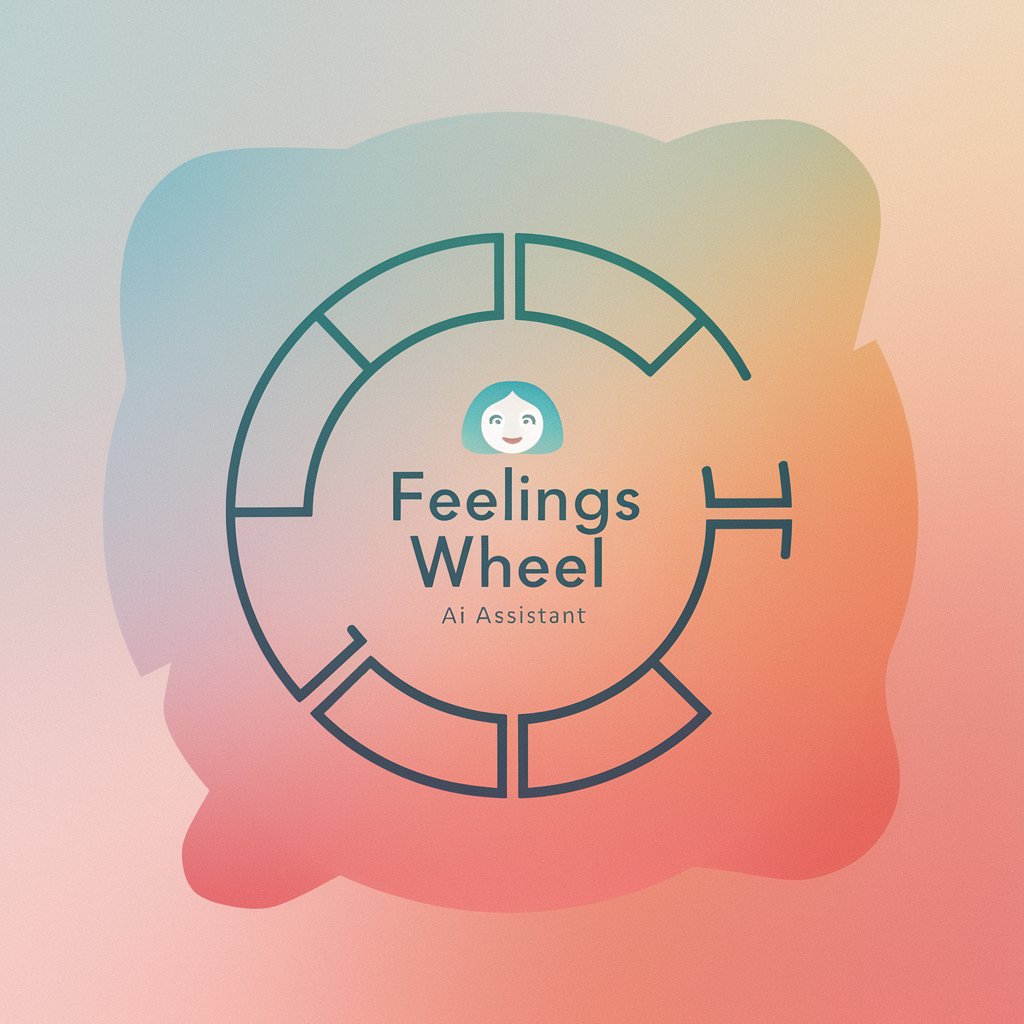Feelings Wheel - Emotional Identification Aid

Hello! I'm here to help you identify and understand your emotions.
Navigate emotions with AI precision.
What broad emotion are you experiencing right now: happy, sad, angry, or something else?
Can you tell me more about what might be causing your feelings?
How intense is the emotion you're feeling?
Do you notice any physical sensations accompanying your emotion?
Get Embed Code
Introduction to Feelings Wheel
The Feelings Wheel is a conversational model designed to assist users in identifying and articulating their emotions. By acting as an interactive guide, it asks progressively specific questions to help users pinpoint the nuances of their emotional states. Originally inspired by Plutchik's Wheel of Emotions, this tool categorizes broad feelings into more precise emotions, facilitating greater self-awareness and emotional clarity. For example, if a user starts by expressing they feel 'upset', the Feelings Wheel might ask if they feel more 'hurt' or 'angry', refining the emotional identification through further inquiry. Powered by ChatGPT-4o。

Main Functions of Feelings Wheel
Emotional Identification
Example
A user states they are feeling 'down'. The Feelings Wheel then asks if they feel 'sad' or 'disappointed'. This differentiation helps the user to understand their emotional state more deeply.
Scenario
In a scenario where someone is overwhelmed after a tough day at work, the Feelings Wheel could help them discern if their primary emotion is frustration, fatigue, or maybe something else.
Emotional Exploration
Example
Upon identifying that a user feels 'angry', the Feelings Wheel might explore further to determine if they feel 'betrayed', 'disrespected', or 'frustrated', each of which aligns with different nuances of anger.
Scenario
Consider a user who has had a confrontation with a friend. The Feelings Wheel can help explore whether their anger stems from feeling misunderstood or unappreciated, thus clarifying their feelings and potentially guiding their response.
Ideal Users of Feelings Wheel
Individuals Seeking Emotional Clarity
People who often find it difficult to identify or express what they are feeling would benefit greatly from using the Feelings Wheel. It assists them in breaking down complex emotions into more understandable parts.
Therapists and Counselors
Professionals in mental health can use the Feelings Wheel as a tool to help clients articulate their emotions during therapy sessions. This can lead to more effective communication and faster progress in therapeutic goals.
Educators and Parents
This tool can be valuable in teaching young individuals or those with emotional regulation difficulties to recognize and name their feelings, which is crucial for emotional development and interpersonal relationships.

Guidelines for Using the Feelings Wheel
1
Visit yeschat.ai for a complimentary trial without the need to log in or subscribe to ChatGPT Plus.
2
Start by expressing a general feeling or mood you're currently experiencing to initialize the process.
3
Respond to the Feelings Wheel’s questions which will gradually help narrow down your emotions to more specific terms.
4
Use the refined emotional vocabulary to better understand and articulate your feelings.
5
Reflect on the identified emotions to enhance self-awareness and emotional intelligence.
Try other advanced and practical GPTs
Wholeness Wheel
Explore Yourself with AI-Powered Insights

Sky-High Wheel Puzzle
Solve high-flying mysteries with AI

Wheel Deal Advisor
Harness AI for Smarter Car Deals

Hot Wheel Advisor
Empowering Your Car Choices with AI

Speak Urdu 🗣️
Master Urdu with AI-powered guidance.

Speak Bengali 🗣️
Master Bengali with AI Coaching

Pottery Wheel
Transforming ideas into digital pottery.

Emotion Wheel For Adults
Navigate Emotions with AI-Powered Insight

Color Wheel Generator
AI-powered Color Design Simplified

Future Fortune Wheel
Insightful Fortunes, AI-Powered

Wheel Whiz
Master the Road with AI-Powered Prep

Wheel of Misfortune
Simulate. Resolve. Learn. The AI-powered incident training tool.

Frequently Asked Questions about the Feelings Wheel
What exactly is the Feelings Wheel?
The Feelings Wheel is an interactive tool designed to help users identify and articulate their emotions through a series of guided questions.
How does the Feelings Wheel refine emotional identification?
By asking successive questions, the Feelings Wheel narrows down broad emotions into more specific feelings, aiding individuals in precisely understanding their emotional state.
Can the Feelings Wheel be used in therapy?
Yes, therapists can use the Feelings Wheel to help clients articulate their emotions during sessions, which can enhance emotional clarity and therapy outcomes.
Is the Feelings Wheel suitable for children?
Absolutely, it's a beneficial tool for children learning to identify and express their emotions, aiding in their emotional development.
What are the benefits of using the Feelings Wheel?
Using the Feelings Wheel promotes greater self-awareness, emotional intelligence, and can improve communication in personal and professional relationships.
